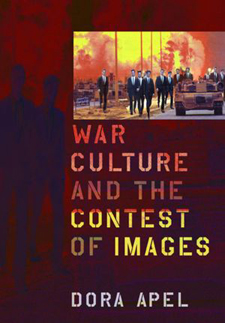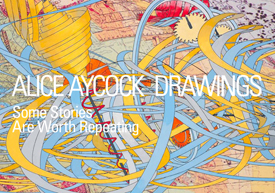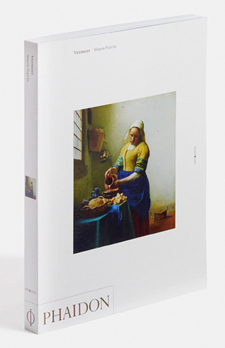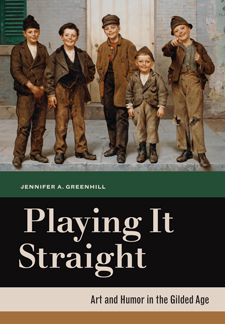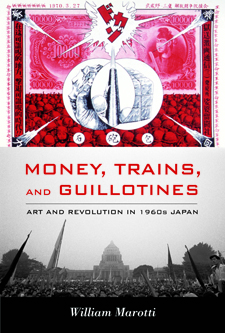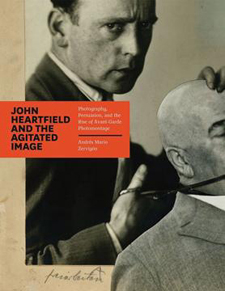CAA News Today
Institutional News
posted by CAA — June 17, 2013
Read about the latest news from institutional members.
Institutional News is published every two months: in February, April, June, August, October, and December. To learn more about submitting a listing, please follow the instructions on the main Member News page.
June 2013
The Meadows Museum of Art at Southern Methodist University in Dallas, Texas, has received a $1 million gift from Linda and William Custard to establish and endow the position of Linda P. and William A. Custard Director of the Meadows Museum and Centennial Chair in the Meadows School of the Arts. The position will also receive an additional $1 million in funding to endow the position.
Travel Grants to Attend the 2014 Annual Conference in Chicago
posted by Lauren Stark — June 17, 2013
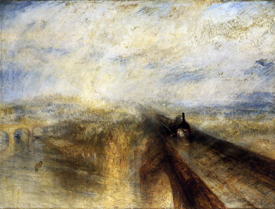 CAA offers Annual Conference Travel Grants to graduate students in art history and studio art and to international artists and scholars. In addition, the Getty Foundation has funded the second year of a program that enables twenty applicants from outside the United States to attend the 2014 Annual Conference in Chicago. Applicants may apply for more than one grant but can only receive a single award.
CAA offers Annual Conference Travel Grants to graduate students in art history and studio art and to international artists and scholars. In addition, the Getty Foundation has funded the second year of a program that enables twenty applicants from outside the United States to attend the 2014 Annual Conference in Chicago. Applicants may apply for more than one grant but can only receive a single award.
CAA Graduate Student Conference Travel Grant
CAA will award a limited number of $250 Graduate Student Conference Travel Grants to advanced PhD and MFA graduate students as partial reimbursement of travel expenses to attend the 102nd Annual Conference, taking place February 12–15, 2014, in Chicago. To qualify for the grant, students must be current CAA members. Successful applicants will also receive complimentary conference registration. Deadline: September 13, 2013.
CAA International Member Conference Travel Grant
CAA will award a limited number of $500 International Member Conference Travel Grants to artists and scholars from outside the United States as partial reimbursement of travel expenses to attend the 102nd Annual Conference, taking place February 12–15, 2014, in Chicago. To qualify for the grant, applicants must be current CAA members. Successful applicants will also receive complimentary conference registration. Deadline: September 13, 2013.
CAA International Travel Grant Program
The CAA International Travel Grant Program, generously supported by the Getty Foundation, provides funding to twenty art historians, museum curators, and artists who teach art history to attend the 102nd Annual Conference, taking place February 12–15, 2014, in Chicago. The grant covers travel expenses, hotel accommodations, per diems, conference registrations, and one-year CAA memberships. The program also includes a one-day preconference meeting to be held on February 11, providing grant recipients and their hosts with the opportunity to address their common professional interests and issues. Applicants do not need to be CAA members. Deadline extended: August 23, 2013.
Donate to the Annual Conference Travel Grants
CAA’s Annual Conference Travel Grants are funded solely by donations from CAA members—please contribute today. Charitable contributions are 100 percent tax deductible. CAA extends a warm thanks to those members who made voluntary contributions to this fund during the past twelve months.
Image: Joseph Mallord William Turner, Rain, Steam and Speed—The Great Western Railway, 1844, oil on canvas, 35⅞ x 49 in. National Gallery, London (artwork in the public domain)
Grants, Awards, and Honors
posted by CAA — June 15, 2013
CAA recognizes its members for their professional achievements, be it a grant, fellowship, residency, book prize, honorary degree, or related award.
Grants, Awards, and Honors is published every two months: in February, April, June, August, October, and December. To learn more about submitting a listing, please follow the instructions on the main Member News page.
June 2013
Dora Apel has received a Marilyn Williamson Distinguished Faculty Fellowship for 2013–14, awarded by the Humanities Center at Wayne State University in Detroit, Michigan.
Sarah D. Beetham, a doctoral candidate in the Department of Art History at the University of Delaware in Newark, has received a 2013 Henry Luce Foundation/American Council of Learned Societies Dissertation Fellowship. Her research project is titled “Sculpting the Citizen Soldier: Reproduction and National Memory, 1865–1917.”
Leigh Behnke, an artist and lecturer at the School of Visual Arts in New York, has earned a 2013 fellowship in fine arts from the John Simon Guggenheim Memorial Foundation.
Jill E. Bugajski, a PhD student in the Department of Art History at Northwestern University in Evanston, Illinois, has accepted a 2013 Henry Luce Foundation/American Council of Learned Societies Dissertation Fellowship. She is researching “Totalitarian Aesthetics and the Democratic Imagination in American Art, 1933–1947.”
Mary Katherine Campbell, assistant professor of art history in the School of Art at the University of Tennessee, Knoxville, has earned a 2013 ACLS Fellowship from the American Council of Learned Societies. Her project is called “Mormon Porn: Charles Ellis Johnson’s Stereographic Sinners and Latter-Day Saints.”
Cora Cohen, an artist based in Long Island City, New York, has received a 2013 fellowship in fine arts from the John Simon Guggenheim Memorial Foundation.
Huey Copeland, associate professor of art history at Northwestern University in Evanston, Illinois, has been given a 2013 ACLS Fellowship from the American Council of Learned Societies. He will use the funds to work on his project, “In the Arms of the Negress: A Brief History of Modern Artistic Practice.”
Katelyn D. Crawford, a doctoral student in the McIntire Department of Art at the University of Virginia in Charlottesville, has accepted a 2013 Henry Luce Foundation/American Council of Learned Societies Dissertation Fellowship to continue work on “Transient Painters, Traveling Canvases: Portraiture and Mobility in the British Atlantic, 1750–1780.”
Elise Dodeles has been awarded a 2013 New Jersey Individual Artist’s Fellowship for Painting from the New Jersey State Council on the Arts.
Klint Ericson, a doctoral student in the Art Department at the University of North Carolina, Chapel Hill, has earned a 2013 Henry Luce Foundation/American Council of Learned Societies Dissertation Fellowship. He will continue working on “Sumptuous and Beautiful, As They Were: Architectural Form, Everyday Life, and Cultural Encounter in a Seventeenth-Century New Mexico Mission.”
Coco Fusco, an artist based in Brooklyn, New York, has won a 2013 fellowship in film and video from the John Simon Guggenheim Memorial Foundation.
Mary D. Garrard, professor emerita of art history at American University in Washington, DC, visited the University of Miami in Coral Gables, Florida, as Stanford Distinguished Professor in the Humanities in February 2013. While in residence, Garrard delivered the keynote address for a conference celebrating the university’s Center for the Humanities as the new publication site for Early Modern Women: An Interdisciplinary Journal; she also gave another plenary session lecture for conferees.
Ann Eden Gibson, professor emerita of art history at the University of Delaware in Newark, has won the Georgia O’Keeffe Foundation’s Research Center Book Prize for Abstract Expressionism: Other Politics (1997). The triennial $5,000 prize honors the author of a significant book on some aspect of American modernism published from the mid-1980s to 2009.
Sharon Harper, an artist and associate professor of visual and environmental studies at Harvard University in Cambridge, Massachusetts, has received a 2013 fellowship in photography from the John Simon Guggenheim Memorial Foundation.
Guy Heedren, professor of art at Williams College in Williamstown, Massachusetts, has won a 2013 fellowship in fine-arts research from the John Simon Guggenheim Memorial Foundation.
Laura Turner Igoe, a graduate student in art history at Temple University’s Tyler School of Art in Philadelphia, Pennsylvania, has received a 2013 Henry Luce Foundation/American Council of Learned Societies Dissertation Fellowship. Her research project is called “The Opulent City and the Sylvan State: Art and Environmental Embodiment in Early National Philadelphia.”
Sharon Irish, an art and architectural historian, has been awarded a Colston Research Fellowship from the Institute of Advanced Study at the University of Bristol in England for spring 2014, hosted by the Department of Drama: Theatre, Film, and Television, in conjunction with the Productive Margins program. As a Benjamin Meaker Visiting Professor, Irish will continue her research on the artists Stephen Willats and Suzanne Lacy, in collaboration with the Knowle West Media Centre in Bristol. Her project is entitled “In the Margins? Local Knowledge and Self-Organization.”
Susan N. Johnson-Roehr, who recently earned her PhD in architectural history from the University of Illinois, Urbana-Champaign, has been named a New Faculty Fellow by the American Council of Learned Societies. She will take up a two-year position at the University of Virginia in Charlottesville.
Tirza True Latimer, chair of the graduate program in Visual and Critical Studies at California College of the Arts in San Francisco, has received a National Endowment for the Humanities Summer Stipend to complete research for a book, provisionally titled Eccentric Modernisms: Making Differences in the History of American Art.
Megan R. Luke, assistant professor in the Department of Art History at the University of Southern California in Los Angeles, and Sarah B. H. Hamill, assistant professor of art at Oberlin College in Oberlin, Ohio, have received a Collaborative Research Fellowship from the American Council of Learned Societies. Their project is entitled “Sculpture and Photography: The Art Object in Reproduction.”
Lyle Massey, associate professor in the Art History Department at the University of California, Irvine, has been awarded a Frederick Burkhardt Residential Fellowship from the American Council of Learned Societies. She will be in residence at the Huntington Library, Art Collections, and Botanical Gardens in Pasadena to work on her project, “Woman Inside Out: Gender, Dissection, and Representation in Early Modern Europe.”
Carrie Moyer, an artist based in Brooklyn and associate professor of art and art history at Hunter College, City University of New York, has received a 2013 fellowship in fine arts from the John Simon Guggenheim Memorial Foundation.
Jennifer Anne Norman has completed a fall 2012 artist residency at the Sam and Adele Golden Foundation for the Arts, located in New Berlin, New York.
Erin K. Pauwels, a doctoral candidate in the history of art at Indiana University in Bloomington, has received a 2013 Henry Luce Foundation/American Council of Learned Societies Dissertation Fellowship. She continue working on her dissertation, “Sarony’s Living Pictures: Performance, Photography, and Gilded Age American Art.”
Naomi Ruth Pitamber, a doctoral student in art history at the University of California, Santa Barbara, has earned a Mellon/ACLS Dissertation Completion Fellowship from the American Council of Learned Societies. She will continue work on her research project, “Re-Placing Byzantium: Laskarid Urban Environments and the Landscape of Loss, 1204–1261.”
D. Jacob Rabinowitz, a PhD student in the Institute of Fine Arts at New York University, has been awarded a 2013 Henry Luce Foundation/American Council of Learned Societies Dissertation Fellowship to continue his project, “Public Construction: Christo and Jeanne-Claude’s Running Fence.”
Yael Rice, an art historian who teaches at Amherst College in Amherst, Massachusetts, has received a Rare Book School Mellon Fellowship in Critical Bibliography to attend the University of Virginia’s Rare Book School, a three-year program for early-career scholars that seeks to reinvigorate bibliographic studies in the humanities.
Conrad Rudolph, professor of medieval art history at the University of California, Riverside (UCR), has won a 2012–13 Digital Humanities Grant from the National Endowment for the Humanities for a project, “FACES: Faces, Art, and Computerized Evaluation Systems,” that he is researching with his UCR colleagues, Amit Roy-Chowdhury (electrical engineering) and Jeanette Kohl (art history).
D. Fairchild Ruggles, a professor of landscape architecture at the University of Illinois, Urbana-Champaign, has won a 2013 fellowship from the American Council of Learned Societies. The award, which supports individual scholars working in the humanities and related social sciences, will sustain her project, “Shajar al-Durr: The Extraordinary Architectural Patronage of a Thirteenth-Century Egyptian Slave-Queen.”
Gary Schneider, an artist based in Brookhaven, New York, and assistant professor of visual arts in the Mason Gross School of the Arts at Rutgers University in New Brunswick, New Jersey, has received a 2013 fellowship in photography from the John Simon Guggenheim Memorial Foundation.
William Tronzo of the University of California, San Diego, and an affiliate of Università degli Studi Roma Tre has been awarded a multiyear grant from the Getty Foundation for a project he has been working on with Kimberly Bowes of the University of Pennsylvania and Mellon Professor at the American Academy in Rome. Called “Framing the Medieval Mediterranean: Museums and Archaeology in National Discourse,” the project will bring together scholars and museum professionals from North Africa, the Middle East, Europe, and America to discuss their common and divergent aims, methodologies, approaches, and techniques regarding the collection and display of medieval material culture, as well as the influence of national narratives on shaping field- and institution-specific goals. The grant is part of the Getty Foundation’s Connecting Art Histories initiative, which aims to increase scholarly exchange among individuals in key international regions whose economic or political realities have prevented previous collaboration.
Edward Vazquez, assistant professor of the history of art and architecture at Middlebury College in Middlebury, Vermont, has earned a 2013 ACLS Fellowship from the American Council of Learned Societies for his research on “Aspects: Fred Sandback’s Sculpture.”
Fotini Vurgaropulou, an artist based in Brooklyn, New York, has been commissioned by the Backyard Garden and New York’s GreenThumb program to install a 9-foot-tall mixed-media sculpture (steel, paint, copper, and cast resin) in a public garden in the neighborhood of Red Hook. The piece is on view from April 21 to August 4, 2013.
Nancy L. Wicker, professor of art history at the University of Mississippi in Oxford, has been named a recipient of a Digital Humanities Start-Up Grant by the National Endowment for the Humanities to initiate “Project Andvari: A Digital Portal to the Visual World of Early Medieval Northern Europe” with a codirector, Lilla Kopár of the Catholic University and the Institute for Advanced Technology in the Humanities at the University of Virginia.
Alice Pixley Young has accepted a fellowship for a summer residency at the Jentel Artist Residency Program. She will spend the month of July living and working in Banner, Wyoming.
Gregory A. Zinman, who recently earned a doctorate in cinema studies from New York University, has been appointed by the American Council of Learned Societies as a two-year New Faculty Fellow in film at Columbia University in New York.
Exhibitions Curated by CAA Members
posted by CAA — June 15, 2013
Check out details on recent shows organized by CAA members who are also curators.
Exhibitions Curated by CAA Members is published every two months: in February, April, June, August, October, and December. To learn more about submitting a listing, please follow the instructions on the main Member News page.
June 2013
Patricia G. Berman and Pari Stave. MUNCH | WARHOL and the Multiple Image. Scandinavia House, Nordic Center in America, New York, April 27–July 27, 2013.
June Blum. A Celebration of Women’s Art. Cocoa Beach Library, Cocoa Beach, Florida, April 1–19, 2013.
Bruce Boucher. Corot to Cézanne: French Drawings from the Collection of Mr. and Mrs. Paul Mellon at the Virginia Museum of Fine Arts. Fralin Museum of Art, University of Virginia, Charlottesville, Virginia, January 25–June 2, 2013.
Rachel Epp Buller. Postpartum. Erman B. White Gallery of Art, Butler Community Collece, El Dorado, Kansas, March 1–April 5, 2013.
Rachel Epp Buller. Working on the Bias. Stiefel Watson Gallery, Stiefel Theater for the Performing Arts, Salina, Kansas, February 21–April 22, 2013.
Virginia Fabbri Butera. Persona: Externalizing the Psychological Self. Therese A. Maloney Art Gallery, Annunciation Center, College of Saint Elizabeth, Morristown, New Jersey, January 22–April 14, 2013.
Tyrus R. Clutter. Out of Abstraction: Divergent Directions in Late 20th Century Art. Appleton Museum of Art, Ocala, Florida, April 5–June 2, 2013.
Jennifer Farrell. STrAY: Found Poems from a Lost Time. Fralin Museum of Art, University of Virginia, Charlottesville, Virginia, January 25–May 26, 2013.
Lawrence O. Goedde. Traces of the Hand: Master Drawings from the Collection of Frederick and Lucy S. Herman. Fralin Museum of Art, University of Virginia, Charlottesville, Virginia, January 25–May 26, 2013.
Reni Gower. Papercuts. Eleanor D. Wilson Museum, Hollins University, Roanoke, Virginia, May 31–September 14, 2013.
Reni Gower. Heated Exchange: Contemporary Encaustic. Elizabeth Stone Harper Gallery, Harper Center for the Arts, Presbyterian College, Clinton, South Carolina, January 17–February 23, 2013.
Emilie Johnson. Becoming the Butterfly: Landscapes of James McNeill Whistler. Fralin Museum of Art, University of Virginia, Charlottesville, Virginia, January 25–April 28, 2013.
Emilie Johnson. Becoming the Butterfly: Portraits of James McNeill Whistler. Fralin Museum of Art, University of Virginia, Charlottesville, Virginia, April 30–August 4, 2013.
Julian Kreimer. Part of the Story. Lower East Side Printshop, New York, March 20–May 12, 2013.
Preston Thayer. La Florida: 500 Years of Florida Art. Thomas H. Jacobsen Gallery of American Art, Cummer Museum of Art and Gardens, Jacksonville, Florida, January 15–October 6, 2013.
Books Published by CAA Members
posted by CAA — June 15, 2013
Publishing a book is a major milestone for artists and scholars—browse a list of recent titles below.
Books Published by CAA Members appears every two months: in February, April, June, August, October, and December. To learn more about submitting a listing, please follow the instructions on the main Member News page.
June 2013
Dora Apel. War Culture and the Contest of Images (New Brunswick, NJ: Rutgers University Press, 2012).
Jonathan Fineberg. Alice Aycock: Drawings; Some Stories Are Worth Repeating (Southampton, NY: Parrish Art Museum, 2013).
Wayne Franits. The Paintings of Dirck van Baburen, ca. 1592/93–1624: Catalogue Raisonné (Philadelphia: John Benjamins, 2013).
Jennifer A. Greenhill. Playing It Straight: Art and Humor in the Gilded Age (Berkeley: University of California Press, 2012).
Ellen G. Landau. Mexico and American Modernism (New Haven, CT: Yale University Press, 2013).
William Marotti. Money, Trains, and Guillotines: Art and Revolution in 1960s Japan (Durham, NC: Duke University Press, 2013).
Julie Wosk. Breaking Frame: Technology, Art, and Design in the Nineteenth Century (New York: An Authors Guild Backinprint.com Edition, 2013).
Andrés Mario Zervigón. John Heartfield and the Agitated Image: Photography, Persuasion, and the Rise of Avant-Garde Photomontage (Chicago: University of Chicago Press, 2012).
NEA Releases New Research Tool on Working Artists
posted by Christopher Howard — June 13, 2013
What do we know about the 2.1 million artists in the United States’ labor force? To help answer that question, the National Endowment for the Arts (NEA) has released Equal Opportunity Data Mining: National Statistics about Working Artists. This new online research tool offers seventy searchable tables with figures on working artists by state and metropolitan area, by demographic information (including race and ethnicity, age, gender, and disability status), and by residence and workplace. The public is welcome to investigate the tables, a map of state-level rankings, and links to original sources.
“Artists represent just 1.4 percent of the labor force, but they have an outsized role as entrepreneurs and innovators who contribute to the vitality of the communities where they live and work,” said the NEA’s acting chairman, Joan Shigekawa. “These data add further detail and nuance to our understanding of the profile of American artists.”
This new research resource gives statistical profiles of Americans who reported an artist occupation as their primary job, whether full-time, part-time, or self-employed. The data set looks at artists in eleven distinct occupations: actors; announcers; architects; art directors, fine artists, and animators; dancers and choreographers; designers; entertainers and performers; musicians; photographers; producers and directors; and writers and authors. Some tables offer data on employed artists in particular, while other tables measure all artists in the workforce, both employed and looking for work.
The NEA created these data sets based on the US Census Bureau’s Equal Employment Opportunity (EEO) Tables. Every ten years, the Census Bureau produces EEO tables using data from its annual American Community Survey (ACS). This set of EEO tables is drawn from the ACS survey results for 2006–10, which were combined to obtain a large enough sample. The EEO tables are the federal standard for comparing the race, ethnicity, and gender composition of the labor market in specific geographic areas and job categories.
Equal Opportunity Data Mining is the first installment of a series of Arts Data Profile webpages that the NEA will release over the next several months. Future NEA Arts Data Profiles will introduce public data about arts participation and arts organizations, and additional data on artists in the workforce.
Some findings that emerge from the EEO tables include:
- One-fourth of all American architects are women. Yet in Maryland, Massachusetts, Montana, and Washington, the share is roughly one-third. By contrast, in Arkansas, West Virginia, and Wyoming, nearly all architects are men
- Nationally, 4 percent of all artists are disabled, compared with 6 percent of the labor force. At 7 percent, the share of dancers and musicians with a disability is somewhat higher. The percentage of working musicians with a disability is comparatively high in Alaska (25 percent), Alabama (14 percent), Kentucky (16 percent), and Wisconsin (13 percent)
- In Oregon, 40 percent of working actors are African American, Asian, Native American, Pacific Islander, or other, while these ethnic and racial groups make up only 20 percent of the total Oregon labor force
- Roughly one-quarter of musicians working in Nashville commute to the city from outside areas. For example, an estimated one hundred musicians commute thirteen miles from Hendersonville (Sumner County); twenty musicians commute from Franklin, and an additional sixty-five musicians commute to Nashville from other parts of Williamson County
The research tool also includes a video tutorial, links to additional resources (such as the US Census Bureau’s American Fact Finder page), and surveys and databases from the US Department of Labor’s Bureau of Labor Statistics.
For more than thirty years, the NEA has been the only federal agency to use US Census data to analyze artists in the workforce. The NEA seeks to extend the conversation on arts research through commissioned research, direct research grants, and research convenings to encourage more rigorous research on the impact of the arts in other domains of American life, such as education, health and well-being, community livability, and economic prosperity. Recent endeavors include a landmark partnership between the NEA and the US Bureau of Economic Analysis to develop an Arts and Cultural Production Satellite Account that will identify and calculate the arts and culture sector’s contributions to the Gross Domestic Product (GDP). The NEA has convened seventeen federal agencies in the NEA Interagency Task Force on the Arts and Human Development, to foster more research on the arts’ role in improving health and educational outcomes throughout the lifespan. Just published, Creative Communities from Brookings Institution Press is based on a first-ever convening between the NEA and the Brookings Institution on the arts and economic development.
About the National Endowment for the Arts
The National Endowment for the Arts was established by Congress in 1965 as an independent agency of the federal government. To date, the NEA has awarded more than $4 billion to support artistic excellence, creativity, and innovation for the benefit of individuals and communities. The NEA extends its work through partnerships with state arts agencies, local leaders, other federal agencies, and the philanthropic sector.
News from the Art and Academic Worlds
posted by Christopher Howard — June 12, 2013
Each week CAA News publishes summaries of eight articles, published around the web, that CAA members may find interesting and useful in their professional and creative lives.
When Artworks Crash: Restorers Face Digital Test
Paintings fade; sculptures chip. Art restorers have long known how to repair those material flaws, so the experience of looking at a Vermeer or a Rodin remains basically unchanged over time. But when creativity is computerized, the art isn’t so easy to fix. For instance, when a web-based work becomes technologically obsolete, does updated software simply restore it? Or is the piece fundamentally changed? (Read more in the New York Times.)
Crowdfunding Academic Research
When a professor from a small liberal-arts college in central Pennsylvania decided to take on a massive research project two summers ago, he went through the usual, often futile, process of applying for federal and private grants. But when funds were short a year later, he went down a nontraditional route—turning to the public and the internet for help. In fifty days, Juniata College’s Chris Grant and his research partner, Gina Lamendella, raised $10,800 through a crowdfunding website called iAMscientist. (Read more in Insider Higher Ed.)
Self-Sabotage in the Academic Career
Pogo recognized long ago that we often are our own worst enemies. Sure, he was a cartoon character, but he had a point—especially in higher education, where self-sabotage seems to be a standard characteristic of academic careers. In my thirty years as a professor, five years as a dean, and three years as a provost, I have observed many academics harm their own careers, often without realizing it. Here are fifteen ways in which you can be most self-destructive. (Read more in the Chronicle of Higher Education.)
Help Desk: Curating Like a Fool
I’m an artist and art writer and would like to complete the trifecta by seriously trying to curate. However, since I’ve only been on the curated side of the table, I know embarrassingly little about the nitty-gritty of it. For example, when I have a proposal ready, do I inform the proposed artists of my intentions before or after I submit the proposal? Who arranges and pays for shipping work? I only know how I’ve personally been treated and not what is typical. I’m too afraid of looking like a fool to give it a shot. (Read more in Daily Serving.)
“Stuff Matters”: The Crucial Work of the AIC’s Collections Emergency Response Team
The Collections Emergency Response Team, says Eric Pourchot, institutional advancement director at the Foundation of the American Institute for Conservation, “came out of the experience we had after Hurricane Katrina, as many of our members from AIC had served on teams that went down to the New Orleans and Gulf Coast area to help cultural institutions recover as best they could from that disaster.” (Read more in Can You Dig It?.)
Are Video Games the Next Great Art Form?
In 2005, the late film critic Roger Ebert created a storm of controversy when he wrote that video games could never be art. While Ebert wasn’t the first person to address the subject, he was one of the first mainstream critics to do so, and his statement set off a rash of essays, blog posts, and talks arguing for (few) and against (many) his position. The subject has drifted in and out of popular culture ever since, with different scholars weighing in here and there. Recently, a number of museums, including the Smithsonian and MoMA, staged exhibitions featuring video games as art, throwing the topic into focus again. (Read more in Pacific Standard.)
Experimenting with Facebook in the College Classroom
While discussing the nuances of regression analysis, I saw some of my students smiling. It wasn’t a smile of understanding; it was a response to seeing a Facebook comment on their smart phone. I later learned that 99 percent of the students in the research method class were Facebook users, routinely checking for updates ten to twenty times a day. The next semester, I decided to embrace social media and created a Facebook page for the class, which was comprised of twenty-five students. It was actually fun and easy. In less than two hours, I had created a page with relevant material for the course. (Read more in Faculty Focus.)
The Deduction for Charitable Contributions: The Sacred Cow of the Tax Code?
In his most recent budget proposal, President Barack Obama seeks to impose a cap on itemized deductions in the personal income tax return—which includes the deduction for charitable contributions. This provision, part of the administration’s strategy to raise revenue to pay for government spending, has been a part of every White House budget proposal since 2009, and every year arts advocacy organizations join the rest of the nonprofit sector in opposing the changes. So far, the cap has been successfully warded off, but there’s growing concern that if Republicans and Democrats ever agree on sweeping tax reforms, the charitable deduction will be on the chopping block. (Read more in Createquity.)
June 2013 Issue of The Art Bulletin
posted by Christopher Howard — June 11, 2013
 The June 2013 Art Bulletin, the leading publication of international art-historical scholarship, is the second issue of the journal’s centennial year. In “Regarding Art and Art History,” Cecelia F. Klein ponders Precolumbian art and the canon. “Notes from the Field” offers short essays on the subject of mimesis by Dexter Dalwood, Suzanne Preston Blier, Daniela Bohde, Helen C. Evans, Sarah E. Fraser, Thomas Habinek, Tom Huhn, Jeanette Kohl, Niklaus Largier, Peter Mack, and Alex Potts. The June interviewee is Timon Screech, who discusses fantasies and foreign contact in the art history of Japan with Yukio Lippit.
The June 2013 Art Bulletin, the leading publication of international art-historical scholarship, is the second issue of the journal’s centennial year. In “Regarding Art and Art History,” Cecelia F. Klein ponders Precolumbian art and the canon. “Notes from the Field” offers short essays on the subject of mimesis by Dexter Dalwood, Suzanne Preston Blier, Daniela Bohde, Helen C. Evans, Sarah E. Fraser, Thomas Habinek, Tom Huhn, Jeanette Kohl, Niklaus Largier, Peter Mack, and Alex Potts. The June interviewee is Timon Screech, who discusses fantasies and foreign contact in the art history of Japan with Yukio Lippit.
In their essay “An Émigré Art Historian and America: H. W. Janson,” Elizabeth Sears and Charlotte Schoell-Glass explore institutional art history in the mid-twentieth century through the lens of the American career of the German-born author of the classic survey text, History of Art. Emine Fetvaci’s “From Print to Trace” considers why the Ottoman creators of a 1579 book of imperial portraits may have consulted European models, raising questions about the understanding of the portrait as a visual document and the concepts that underpinned it.
Analyzing the intricate iconography of an illustrated thesis print on the system of natural philosophy by the seventeenth-century Franciscan professor Martin Meurisse, Susanna Berger demonstrates the complex uses of imagery in philosophy education in early modern France. Viccy Coltman studies a group of portraits of the Frasers of Reeling, a Scottish Highland family, by the late-eighteenth- and early-nineteenth-century Scottish artist Henry Raeburn to reveal an understanding of portrait likeness as present and prescient in the global British Empire. Finally, in “The Cultural Politics of the Brushstroke” Martin Powers examines the debates between and among European, American, and Chinese intellectuals over some four centuries in order to deconstruct the seductive rhetoric of the brushstroke as employed in both “East” and “West.”
In the Reviews section, Charles Palermo considers three books on fin-de-siècle culture in Europe: Dario Gamboni’s The Brush and the Pen: Odilon Redon and Literature, Linda Goddard’s Aesthetic Rivalries: Word and Image in France, 1880–1926, and Anna Sigrídur Arnar’s The Book as Instrument: Stéphane Mallarmé, the Artist’s Book, and the Transformation of Print Culture. Next, Bridget Alsdorf reviews Mary Jane Jacob and Michelle Grabner’s edited volume, The Studio Reader: On the Space of Artists, and Bolaji Campbell assesses David T. Doris’s Vigilant Things: On Thieves, Yoruba Anti-Aesthetics, and the Fates of Ordinary Objects in Nigeria.
CAA sends The Art Bulletin to all institutional members and to those individuals who choose to receive the journal as a benefit of their membership. The next issue of the quarterly publication, to appear in September 2013, will feature essays on, among other topics, Albrecht Dürer, Horace Walpole, Tanaka Atsuko, and public fountains in nineteenth-century Havana.
Committee on Women in the Arts Picks for June 2013
posted by CAA — June 10, 2013
Each month, CAA’s Committee on Women in the Arts selects the best in feminist art and scholarship. The following exhibitions and events should not be missed. Check the archive of CWA Picks at the bottom of the page, as several museum and gallery shows listed in previous months may still be on view or touring.
June 2013

Carolee Schneemann, Untitled (from the Dust Paintings series), 1984, ink, ashes, acrylic paint, string, vegetable dye, glass particles, photograph on fabric, and circuit board on heavy rag paper, 37½ x 49 in. (artwork © Carolee Schneemann)
Carolee Schneemann: Flange 6rpm
PPOW Gallery
535 West 22nd Street, Third Floor, New York, NY 10011
May 11–June 22, 2013
Titled after a multisensory installation that immerses the viewer in an environment of projected foundry fires, animated by motorized hand-sculpted components cast in aluminum, the fourth exhibition of the pioneering feminist multimedia artist Carolee Schneemann at PPOW Gallery brings together an assortment of works that date from the 1980s to today, illuminating diverse aspects of her expansion of media and her exploration of materials, as well as revealing the politics of her work. In addition to Flange 6rpm, the show features four examples from her Dust Paintings series (1983–86), created with degraded materials, layers of dust, spilled paint, and circuit boards in critical reference to the effacement of Lebanese and Palestinian villages by continuous bombardment. Two major grid installations of photographs and text—Saw Over Want (1980–82) and Vulva’s Morphia (1995)—are also included.
Nicole Eisenman / Matrix 248
Berkeley Art Museum and Pacific Film Archive
Woo Hon Fai Hall, 2625 Durant Avenue, No. 2250, Berkeley, CA 94720
May 3–July 14, 2013
Curated by Apsara DiQuinzio, Nicole Eisenman / MATRIX 248 brings together approximately forty paintings and works on paper by this New York–based artist created after 2009 that variously contemplate the human condition—though they are specifically inspired by and reflect the post-Bush-era economic crisis and sociopolitical instability. The exhibition includes examples of Eisenman’s first reaction to social turmoil—a series of monotypes featuring weeping people—and other works in which she idiosyncratically grafts historical styles such as American Regionalism and the Italian Renaissance with German Expressionism, updating familiar art forms to make timely social commentaries, as in Triumph of Poverty (2009), based on Hans Holbein the Younger’s painting of the same name, and Tea Party (2011).

Ellen Gallagher, Wiglette from DeLuxe, 2004, photogravure and plasticine, 13 x 10¼ in. (artwork © Ellen Gallagher)
Ellen Gallagher: AxME
Tate Modern
Bankside, London SE1 9TG, England
May 1–September 1, 2013
The first overview of this American artist’s twenty-year career and the first major survey of her work in the United Kingdom, Ellen Gallagher: AxME illuminates signature themes of her exploration of myth, nature, social issues, and art history through painting, drawing, relief, collage, print, sculpture, film, and animation, while inviting the viewer to closely study her fascinating mode of production. Along with key works such as the various series of wig-map grid collages that cast sharp commentaries on black beauty ideals, along with the intricate relief Bird in Hand, the exhibition presents Gallagher’s film installation Murmur (2003–4), her ongoing series of watercolor collages Watery Ecstatic, and a new series called Morphia, comprising two-sided drawings that combine “the intimate with the epic, the urban with the oceanic, the ethereal with the physical, and history with the present.”
Nicola L: Body Language under the Sun and the Moon
Broadway 1602
1181 Broadway, Third Floor, New York, NY 10001
May 4–June 22, 2013
Focusing on Nicola L’s radical perspective on the gendered body, whether in pain or in joy, this exhibition introduces the work of an overlooked French artist. Although based in New York since the 1980s, Nicola began her career in Paris in the 1960s as a conceptual artist working in installation, performance, and functional art (since 1976 she also turned to film). A larger-than-life-sized installation, a penetrable sculpture for three performers called The Cylinder, debuted at the Biennale de Paris in 1967 with the rock group the Soft Machine; it was then shown at La MaMa Theater in New York. Pierre Restany welcomed her exceptional vision in his essay “A Long Day’s Journey to the End of the Skin” for her first exhibition at Galerie Daniel Templon in 1969, the same year he hailed Evelyne Axell’s nudes, shown in the same gallery, as signs of sexual liberation.
Nicola’s functional objects became classics of 1960s experimental furniture and soft-art design. But their eroticism is underpinned by an early feminist perspective that merits comparison with the work of several women artists of the sixties onward, whether in France or elsewhere: see, for instance, La Femme Commode (1969–2012), The Lover’s Wardrobe (1967–70), and The Lips Lamp (1969), and soft sculptures such as The Giant Foot (1967–2013) and Giant Woman Sofa (1970–2012). In 1969 Nicola created The Red Coat for Eleven People or Same Skin for Everyone—whose original is included at Broadway 1602—that was first performed with Caetano Veloso and Gilberto Gil at the Isle of Wight Festival in 1970. Characterized as her pivotal “collective object of performance,” the work was used for performances around Europe, including one in Barcelona, where she was arrested by Francisco Franco’s army.
In 1974, Nicola participated in the exhibition Grandes Femmes, Petits Formats at Galerie Iris Clert in Paris, presenting her provocative multimedia sculpture Woman Pregnant from TV (1970). By 1979, the artist moved definitively to New York, where she witnessed and was inspired by the city’s countercultural movements and vibrantly experimental art milieu. In 1981, she directed a film on Abbie Hoffman, the radical social activist and leader of the Yippie movement, called My Name Is Abbie: Orphan of America. Nicola continues to work on her Penetrable Universe series.
Eve Sussman | Rufus Corporation
Bass Museum of Art
2100 Collins Avenue, Miami Beach, FL 33139
April 12–November 3, 2013
Featuring the Rape of the Sabine Women (2004) and 89 Seconds at Alcázar (2007) and complemented by an interventional installation of photographic stills from both works alongside historical portraits from Bass Museum’s collection, this exhibition interweaves masterpieces of Eve Sussman’s film productions through Rufus Corporation (which she founded in 2003) that dazzle with their opulent settings. Conventionally screened in a darkened room, the twelve-minute 89 Seconds at Alcázar delights with Sussmann’s enactment of the enigmatic moment of court life captured in Diego Velasquez’s Las Meninas (1656).
With its five acts inventively presented as a five-part video installation, Sussman’s celebrated Rape of the Sabine Women is a potent interpretation of the myth of Rome’s founding—filmed in Germany and Greece and set in the Cold War sixties—as ideal vehicle for her critique of utopia, power, and gender relationships in comparable historical settings of hope and decadence. Although Rape of the Sabine Women was made as a feature film, the action of its presentation at the Bass unspools on over thirty screens—including sprawling wall projections, a houselike construction, several tiny video monitors, and a massive installation of television sets piled randomly on the floor—and offers a mesmerizing immersive filmic experience that enhances the visual poetics and the power of Sussman’s reinterpretation of the Roman legend with government agents and Greek butchers’ daughters.

Niki de Saint Phalle, My Monster, 1968 (artwork © Niki de Saint Phalle/BUS 2013)
Niki de Saint Phalle: The Girl, the Monster, and the Goddess
Moderna Museet
Skeppsholmen, Stockholm, Sweden
April 20–December 1, 2013
Capitalizing mainly on the Moderna Museet’s comprehensive collection of works by Niki de Saint Phalle, largely thanks to Pontus Hulten and a generous donation by the late artist, this exhibition captures the centrality of the figures of the girl, the monster, and the goddess in de Saint Phalle’s artistic universe, exploring its autobiographic and feminist underpinnings and advocating the importance of the artist in the twentieth-century postwar avant-garde. Enhanced by archival material that reflects the reception of her Ur-Goddess, She – A Cathedral, constructed for the museum in 1966, the exhibition evokes the meeting of the girl, the monster and the goddess in de Saint Phalle’s film Daddy and is accompanied by a new documentary on the artist.
VALIE EXPORT: Images of Contingence
Żak | Branicka
Lindenstrasse 35, Third Floor, Berlin D-10969 Germany
April 26–June 16, 2013
“For me, contingence is how and where you perceive borders, and how and where and when borders explode,” said VALIE EXPORT, and it is the exploration of a variety of borders that Images of Contingence illuminates by highlighting the artist’s interest in physical contact and its implications in various media, including installation, drawing, photography, film, and archival materials. Along with the installation Fragments of Images of Contingence (1994), in which light bulbs hanging from poles and wires are sensuously yet dangerously immersed into cylinders filled with fundamental-to-our-existence liquids such as milk, used oil, or water, and its rhythmic pendant, The un-ending/-ique melody of cords (1998), a recording of a threadless sewing machine and its sound, the exhibition brings together a selection of videos permeated by issues of contingency, liminality, and sensual experience. The show also includes the artist’s celebrated Touch Cinema, performed in Munich in 1969, for its political activation of touch. A series of drawings from the early 1970s, depicting hands that protect and caress or cause suffering, complements this showcase of EXPORT’s negotiation of borders by illuminating her contradictory exploration of touch and the female body as ciphers of intimacy, sensuality, and carnality, as well as violence and aggression.
Getty Foundation Funds a Third Year of CAA’s International Travel Grant Program
posted by Christopher Howard — June 10, 2013
 The Getty Foundation has awarded CAA a major grant to fund the International Travel Grant Program for a third consecutive year. The foundation’s support will enable CAA to bring twenty international visual-arts professionals to the 102nd Annual Conference taking place February 12–15, 2014, in Chicago. CAA’s International Travel Grant Program supports art historians, artists who teach art history, and museum curators, and provides the grantees with funds for travel expenses, hotel accommodations, per diems, conference registrations, and one-year CAA memberships. The program will include a one-day preconference meeting to be held on February 11, 2014, providing grant recipients and their hosts with the opportunity to address their common professional interests and issues.
The Getty Foundation has awarded CAA a major grant to fund the International Travel Grant Program for a third consecutive year. The foundation’s support will enable CAA to bring twenty international visual-arts professionals to the 102nd Annual Conference taking place February 12–15, 2014, in Chicago. CAA’s International Travel Grant Program supports art historians, artists who teach art history, and museum curators, and provides the grantees with funds for travel expenses, hotel accommodations, per diems, conference registrations, and one-year CAA memberships. The program will include a one-day preconference meeting to be held on February 11, 2014, providing grant recipients and their hosts with the opportunity to address their common professional interests and issues.
The goal of the International Travel Grant Program is to increase international participation in CAA and to diversify the organization’s membership, which now includes members from seventy-five nations. CAA also strives to familiarize international participants with the submission process for conference sessions and foster collaboration among American art historians, artists, and curators and their international colleagues. As in previous years, members of CAA’s International Committee and the National Committee for the History of Art have agreed to host the program participants.
Grant guidelines and the 2014 application can be found on the CAA website. Professionals who have not previously attended a CAA conference are especially encouraged to apply. Applicants do not need to be CAA members. This grant program is not open to graduate students or to those participating in the 2014 conference as chairs, speakers, or discussants. The deadline for applications has been extended to August 23, 2013.
For information on applying to the International Travel Grant Program, please contact its project director, Janet Landay, at jlanday@collegeart.org or 212-392-4420.
Image: Two International Travel Grant recipients and their CAA hosts at the 2013 Annual Conference. From left to right: Elaine O’Brien (CAA host), Venny Nakazibwe (with back turned, from Uganda), Trinidad Perez (Ecuador), and Ann Albritton (host and chair of CAA’s International Committee) (photograph by Bradley Marks)




 Linda and William Custard of Dallas, Texas
Linda and William Custard of Dallas, Texas
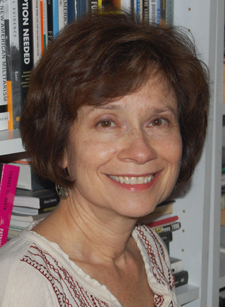 Dora Apel
Dora Apel

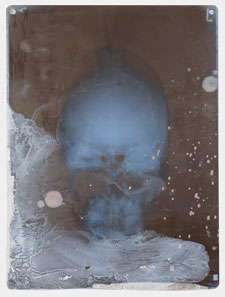 Cora Cohen, R 77, 2011, acrylic, Flashe, and tape on roentgenograph, 15⅝ x 11¾ in. (artwork © Cora Cohen)
Cora Cohen, R 77, 2011, acrylic, Flashe, and tape on roentgenograph, 15⅝ x 11¾ in. (artwork © Cora Cohen)
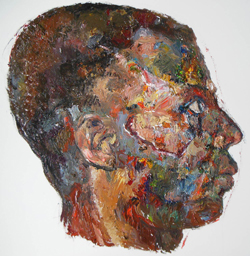 Elise Dodeles, San Francisco Area Fighter A885 in Profile, 2012 (artwork © Elise Dodeles)
Elise Dodeles, San Francisco Area Fighter A885 in Profile, 2012 (artwork © Elise Dodeles)
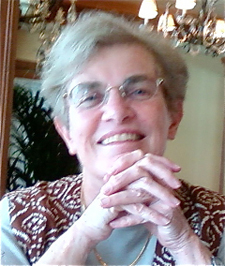 Mary D. Garrard
Mary D. Garrard
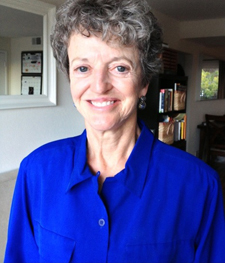 Ann Eden Gibson
Ann Eden Gibson
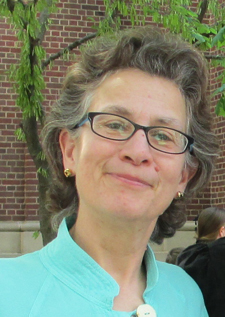 Sharon Irish
Sharon Irish
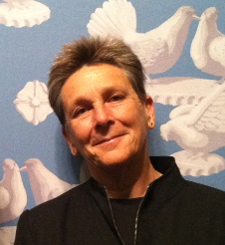 Tirza True Latimer
Tirza True Latimer
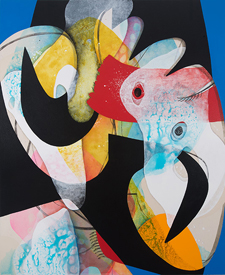 Carrie Moyer, Hook, Line & Sinker, 2012, acrylic, graphite, and glitter on canvas, 72 x 60 in. Collection of the artist (artwork © Carrie Moyer)
Carrie Moyer, Hook, Line & Sinker, 2012, acrylic, graphite, and glitter on canvas, 72 x 60 in. Collection of the artist (artwork © Carrie Moyer)
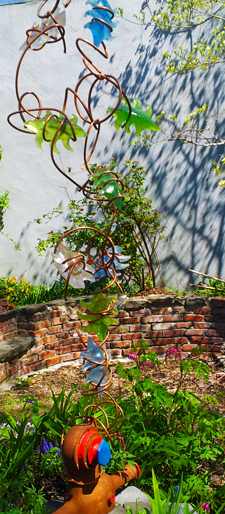 Fotini Vurgaropulou, Red Hook Mama, 2013, steel, paint, copper, and cast resin (artwork © Fotini Vurgaropulou)
Fotini Vurgaropulou, Red Hook Mama, 2013, steel, paint, copper, and cast resin (artwork © Fotini Vurgaropulou)
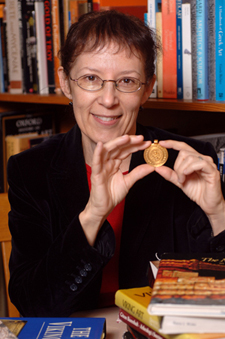 Nancy L. Wicker
Nancy L. Wicker
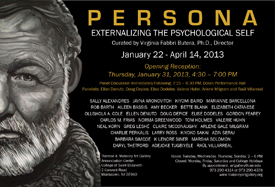

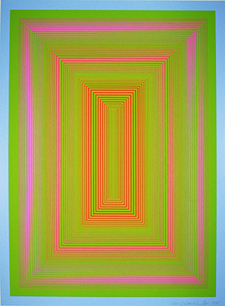 Richard Anuszkiewicz, New Glory, 1975, screen print, 26 x 19½ in. (artwork © Richard Anuszkiewicz)
Richard Anuszkiewicz, New Glory, 1975, screen print, 26 x 19½ in. (artwork © Richard Anuszkiewicz)
 Suzanne McClelland, Soft Partition, 2012, ink and graphite on Yupo paper, 9 x 12 in. (artwork © Suzanne McClelland)
Suzanne McClelland, Soft Partition, 2012, ink and graphite on Yupo paper, 9 x 12 in. (artwork © Suzanne McClelland)
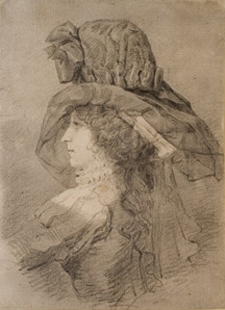 Jean-Baptiste Isabey, Jeanne Justine Laurice de Salienne (The Artist’s Wife), ca. 1789, pencil and grey wash, 7 x 5⅛ in. Fralin Museum of Art, University of Virginia, Charlottesville (artwork in the public domain)
Jean-Baptiste Isabey, Jeanne Justine Laurice de Salienne (The Artist’s Wife), ca. 1789, pencil and grey wash, 7 x 5⅛ in. Fralin Museum of Art, University of Virginia, Charlottesville (artwork in the public domain)
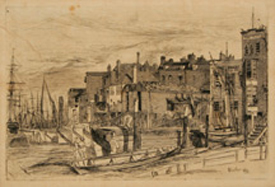 James McNeill Whistler, Nocturne, 1878, lithotint on blue laid chine collé, second state, 6¾ x 10⅛ in. Fralin Museum of Art, University of Virginia, Charlottesville (artwork in the public domain)
James McNeill Whistler, Nocturne, 1878, lithotint on blue laid chine collé, second state, 6¾ x 10⅛ in. Fralin Museum of Art, University of Virginia, Charlottesville (artwork in the public domain)
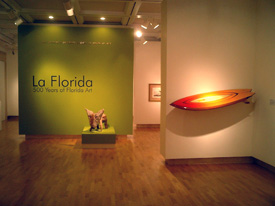 Installation view of La Florida: 500 Years of Florida Art
Installation view of La Florida: 500 Years of Florida Art
